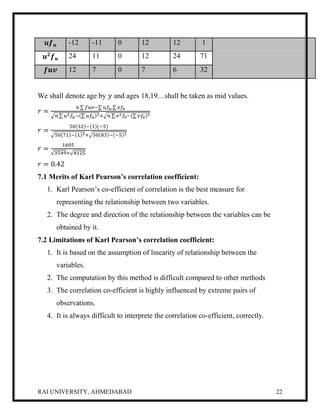The document discusses correlation as a statistical tool for measuring the relationship between two variables, introducing types of correlation, such as positive, negative, simple, and multiple. It details methods for calculating coefficients of correlation, including Karl Pearson's method, and the use of scatter diagrams to visualize relationships. Additionally, it covers concepts like bivariate distribution and the merits and limitations of various correlation methods.
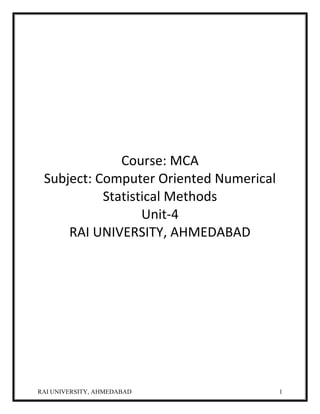

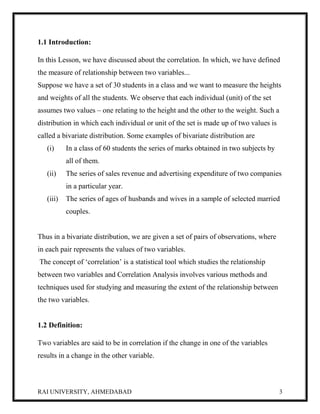





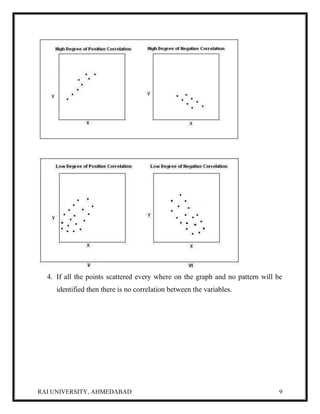
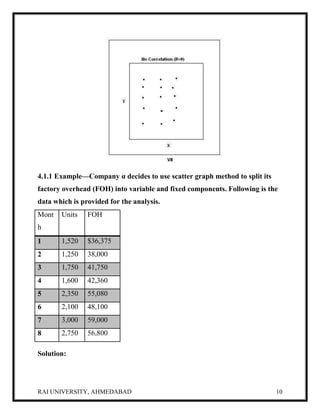

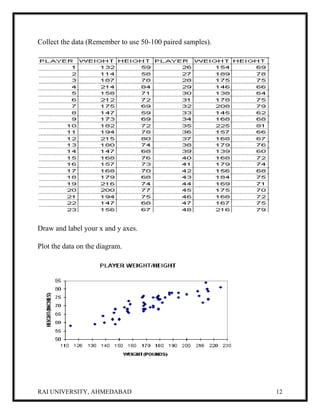
![RAI UNIVERSITY, AHMEDABAD 13
According to this scatter diagram the new commissioner was right. There does
seem to be a positive correlation between a player's weight and her height. In other
words, the taller a player is the more she tends to weight.
4.2 Merits:
(1) This is a simple method of studying correlation between two variables.
(2)More mathematical knowledge is not required in this method.
(3)If one of the pairs of values is extreme, it does not influence much in
deriving the conclusion.
(4)It is the first step in studying the relationship between two variables.
4.3 Limitations:
(1)This method gives an idea about the direction and to some extent the degree
of relationship between the variables, but does not give the exact measure of
the relationship between the variables.
5.1 Karl Pearson’s Coefficient of Correlation
The Karl Pearson’s method is popularly known as Pearson’s Coefficient of
correlation.
One of the most widely used statistics is the coefficient of correlation‘𝑟’ which
measures the degree of association between the two values of related variables
given in the data set. The coefficient of correlation ‘r’ is given by the formula
𝑟 =
∑ 𝑋𝑌
𝑛𝜎𝑥 𝜎 𝑦
=
∑ 𝑋𝑌
√∑ 𝑥2 ∑ 𝑦2
[∵ 𝜎2
𝑥 =
∑ 𝑥2
𝑛
; 𝜎2
𝑦 =
∑ 𝑦2
𝑛
]](https://image.slidesharecdn.com/coursepackunit-4-150315231256-conversion-gate01/85/MCA_UNIT-4_Computer-Oriented-Numerical-Statistical-Methods-13-320.jpg)








